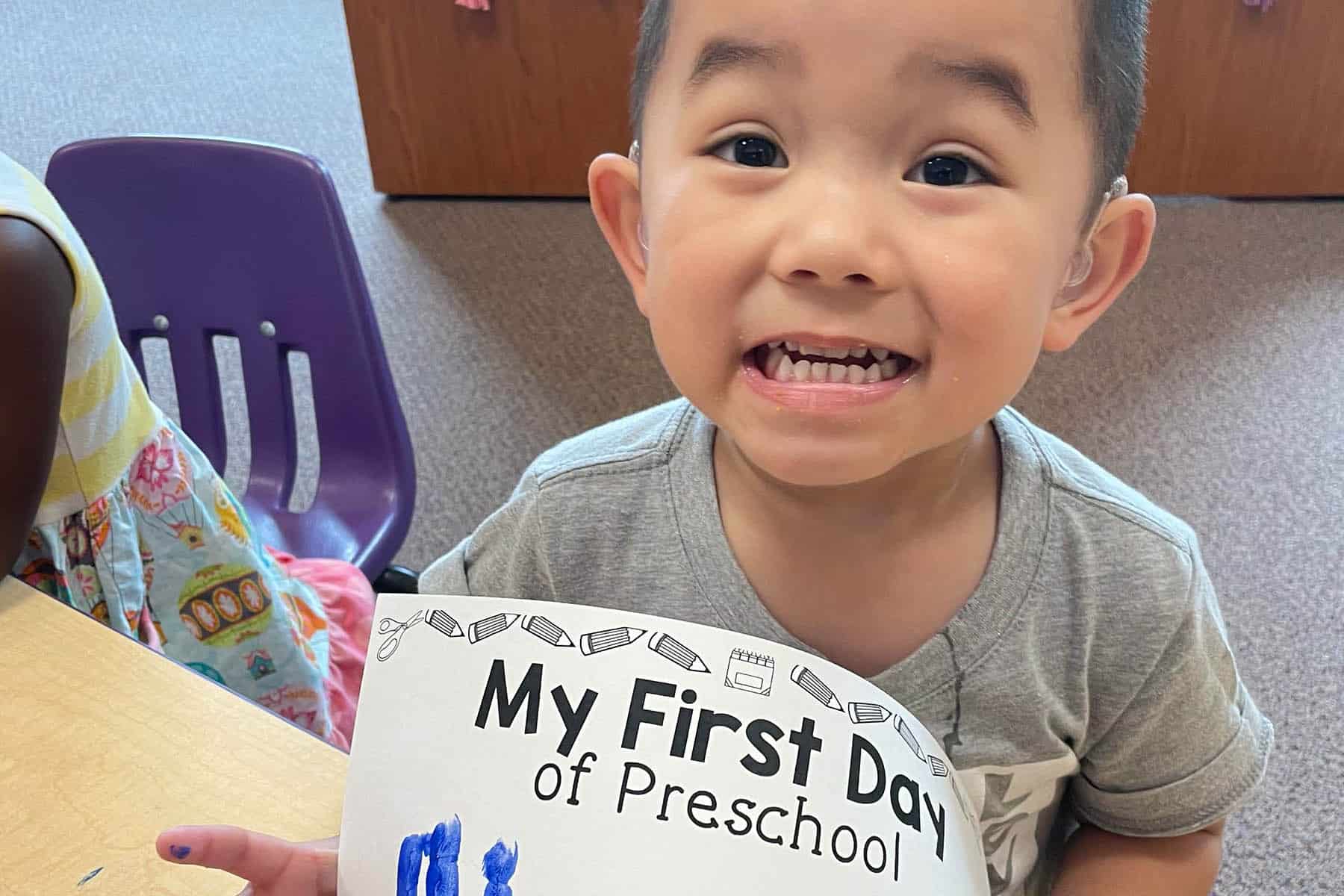School is back in session! Many teachers spend the first few weeks engaging in team building activities to enhance their class culture and help students get to know one another. Below you will find five back to school activities that promote language skills along with tips for our students who are deaf and hard of hearing.
- Student of the day
- Get to know the students in your class by having them fill out and present a simple ‘All About Me’ page and bring in a few items to show the class. Some topics that are fun for a child to show and explain might include their favorite stuffed animal or water bottle or a picture of their family or pet. During this time a child who is deaf or hard of hearing might want to explain her hearing loss and listening device(s) to the group.
- Tip: If the student with hearing loss is in a larger class, consider having her go within the first third of the group after a few of her peers have presented. This way she can use language models provided by previous students, and the class quickly learns about her hearing loss.
- School scavenger hunt
- School scavenger hunts are wonderful for students such as kindergartners who are new to a school. Figuring out the clues builds receptive language. Scavenger hunts help the class learn the layout of the building, get students moving and are fun!
- Tip: To encourage language, consider having children take turns asking questions to people throughout the building. When the class meets the janitor have a child ask, “How do you help my school?”
- Guess Who?
- Guess Who? is a board game favorite that can be personalized by the teacher. Replace the characters with staff and student pictures. Work on question asking and answering abilities, focusing on ‘is’ and ‘does’ questions.
- Tip: Make the game more difficult by setting parameters: don’t ask if the person is a boy/girl or, in schools with uniforms, don’t ask if the person is wearing a specific color.
- Icebreaker Jenga
- Write or tape questions onto Jenga blocks ahead of time. Then take turns answering questions with every block pulled. If you have time, extend the activity by asking follow-up questions so it becomes more conversational.
- Tip: There are a lot of blocks in Jenga! For younger students, consider playing icebreaker beach ball instead. Write a question on each colored strip of the ball and toss it to one another. The color that is facing the student when caught is the question that gets asked. This will limit you to six questions repeated throughout the game.
- Set class rules
- When students develop the class rules, they become more invested in following them. This collaboration fosters a community of mutual respect. Break into small groups to develop goals and then come back together to determine the final set.
- Tip: To make sure the student with hearing loss participates, consider making sure each child in a small group creates a goal. Enhance the small group discussion by asking questions about why that specific goal was chosen or is important to them.
These activities will not only assist you in learning about your students, but they will help the class get to know one another as well. Assess language levels throughout the activities to help determine what skills you need to work on moving forward.

Abby Meister, MSDE, CED is the content coordinator of the Emerson Center for Professional Development at CID – Central Institute for the Deaf. She has been a teacher of the deaf for over 10 years, primarily working with children ages 2-5. She has presented at professional conferences with content focusing on early intervention and listening and spoken language strategies for children who are deaf or hard of hearing. She received her master’s degree in deaf education through the Program in Audiology and Communication Sciences (PACS) at Washington University.












